Patrick Fitzgerald and Family
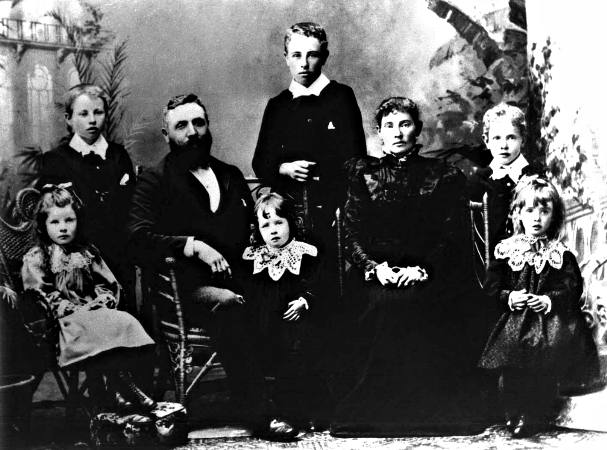
The Fitzgerald Family. Left to right: Ellen Jnr, John, Patrick, Florence, David, Ellen Snr, James and Mary. Courtesy Frank Fitzgerald Jnr.
The unsubstantiated story circulated amongst family members is that Patrick Fitzgerald left Ireland for Australia to escape an arranged marriage, but it may have been that he saw the existence of a brighter future in the Australian colonies to where many Irish compatriots had earlier migrated. By the late 1800s the potato famines had passed but their disastrous outcomes still existed in the memories of many Irish families. In the 1840s thousands of Irish citizens left Ireland for United States of America, Canada and Australia to establish new careers and take up new challenges, so news of the possibilities and successes was readily available to those remaining in Ireland.
Patrick Fitzgerald was born on 1 February 1855, the second child of David and Mary Fitzgerald formerly Egan. David and Mary had married in St Patrick’s church Callaghan’s Mills on 24 February 1851. Patrick’s father farmed eighty one acres of leased townland at Cloghoolia in the parish of Clonlea, County of Clare. [2] After a family gathering Patrick left Cloghoolia in 1877 for Cork to board the ship, Peterborough. He arrived in Sydney on 15 January 1878 where there were brothers of his mother and other friends from County Clare. [3] Shortly after he moved to Melbourne and worked for some time on the construction of the Gippsland Railway. Later he was employed in a brewery and eventually became manager of the Young Australian Hotel in North Melbourne.
During the time Patrick was working as a hotel keeper he married Ellen Walsh at the Roman Catholic Church of St Peter and St Paul, Emerald Hill, on 13 September 1882. [4] Both were twenty six years of age. Like Patrick, Ellen was born in Ireland but in the County of Waterford. She travelled to Melbourne in December 1876 accompanied by a married sister and young family. Initially she lived in Emerald Hill, now called South Melbourne, where she had cousins. [5] After their marriage they lived in North Melbourne until 1888 when Patrick took up land on Warrigal Road, East Brighton (South Oakleigh). It was there on 7 November 1939 that Patrick died at eighty three years of age suffering from an infection of the heart. [6]
John O’Shanassy, a fellow Irishman, arrived in Victoria in 1841 and took up 40,000 acres just outside Dendy’s Special Survey. [7] He abandoned it after five years because it was not a financial success but on leaving he recommended to the Crown Lands Commissioner that the lease be transferred to the brothers Richard and John King. By 1846 the King brothers gained the squatters’ rights to 5000 to 6000 acres stretching from South Road to Nepean Road and bounded to the east and west by Warrigal and Chesterville roads. They immediately began the difficult and labour intensive process of clearing the land. To assist them in this work the King brothers brought in and employed Southern Irishmen on their property which they called Kingsland. The Irishmen formed their own settlement in East Brighton which for a time was known as Irishtown. The existence of this Catholic Irish group no doubt attracted other Irishmen over several years including the Fitzgerald family, a family which at that time included one child, David born in 1885. One other child, Catherine, almost one year old, had died at North Melbourne on 10 February 1888 shortly before the move to East Brighton.
The virgin bush, that Patrick Fitzgerald settled on, cleared and fenced on the east side of Warrigal Road between Centre Road and South Road proved to be unsuitable for market gardening. As a consequence he set about establishing a “boiling down” business on approximately sixteen acres. This was not an easy venture as he faced the natural disaster of fire and the opposition of fellow residents and local councillors. Even though his business was some distance from the nearest neighbour, people complained over many years about the stench created by the boiling down process. In 1927 two golf clubs and a land development company complained to the Moorabbin Shire Council and the State Board of Health about the Fitzgerald and Dale companies with their eyesore buildings from which emanated a disgusting odour. The presence of these factories had a depressing effect on the value of the surrounding land and prevented its development, they claimed. [8] They pointed out that golf club houses to the value of £30,000 to £40,000 each were being built on their properties, and members would build on the adjoining estates but for the objectionable odours coming from these factories and the unsightly buildings where the work was carried on. [9]
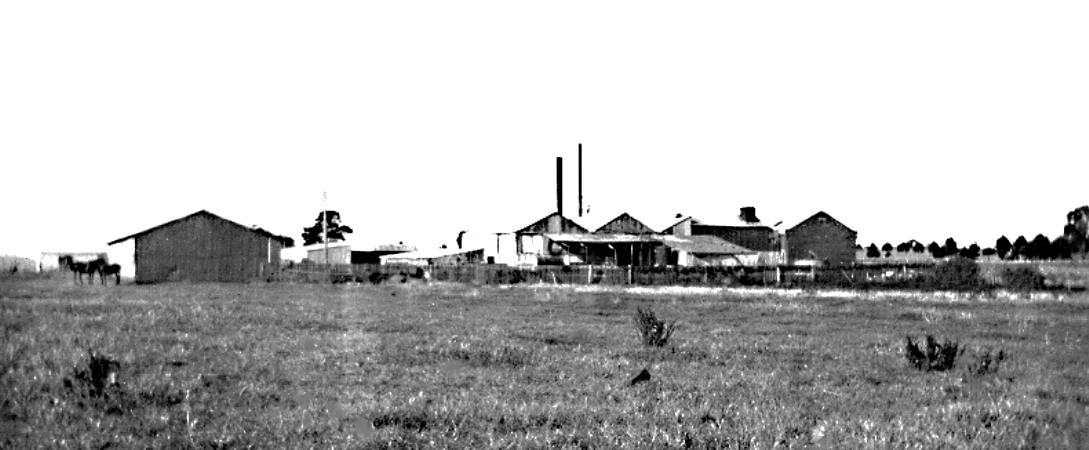
P Fitzgerald & Sons Pty. Ltd., Warrigal Road, South Oakleigh. Viewed from Old Dandenong Road looking north. Courtesy Frank Fitzgerald Jnr.
Each time the question of renewal of noxious industry licences came before them, Moorabbin councillors debated at length the pros and cons of granting licences to Fitzgerald and Sons and to Henry Dale. This went on for over thirty years. Those supporting the issuing of licences pointed out that the two companies had been operating for many years in Warrigal Road, long before other people moved into the area and if the complainants were really concerned they should buy them out. Patrick Fitzgerald did sell some land to the Commonwealth Golf Club and the Yarra Yarra Club but firmly indicated he was not interested in being bought out, as he said he had a business to run. [10] Over time Patrick had purchased land at what is now the entrance to Yarra Yarra Golf links and leased it to Chinese market gardeners. This was sold when Yarra Yarra was establishing a new golf links in Warrigal Road using money gained from the sale of their property at Montmorency. Some land to the east of the factory in Warrigal Road was sold to Commonwealth Golf Club in the 1920s to allow the club to extend a fairway. Patrick also owned twenty acres of land south of Dales where he grazed cattle when he retired from the company he founded. Grandson Frank recalled having to go down to this paddock to round up the cattle and for this task he was paid a welcomed sixpence. [11]
In 1931 Council once again agreed to grant a noxious industry licence to P Fitzgerald & Sons and the company continued as a bone mill in Warrigal Road until they moved to Dandenong in 1963. Dales was licensed as a knackery. The knackery took old horses to slaughter, or dead animals, both of which were skinned and chopped up. The material produced was then passed to Fitzgerald’s where it was cooked in vats powered either by steam or electricity. Frank Fitzgerald explained most of the material they used came in the form of waste collected from butchers’ shops; bones and off cuts. ‘We cooked the fat and bones and ran the tallow off into separate containers. The solids were then taken out and put under pressure in a press to eliminate any grease before it was put in what we called a dryer. The dryer got it ready for crushing to make the blood and bone.’ This artificial fertilizer was highly prized and in great demand by market gardeners throughout Bentleigh and district. The blood and bone was produced until the company moved to Dandenong where they used more modern methods and produced bone meal which was fed to stock. When asked about the stench resulting from the cooking process Frank commented that while you were aware of it, it wasn’t so bad and told the story of the lady travelling on a bus down Warrigal Road who asked the driver what was the smell. She thought it smelt like roast beef. The driver responded, ‘That ain’t roast beef that’s roast horse.’ [12]
The Fitzgeralds were staunch members of the Roman Catholic Church and keen supporters of the parish in East Brighton that came to be known as St Peter’s. One child of Patrick and Ellen Fitzgerald became a Presentation Nun and seven granddaughters were professed in several different religious orders. [13] One grandson became a Blessed Sacrament Father. Patrick’s children attended the small wooden school house, 30ft by 15 ft, built in Centre Road on land owned by Fred Quinn. [14] There were seven children involved; David (1885), John (1888), Ellen Margaret (1891), Patrick James (1893), Mary Ann (1894), Florence Catherine (1896), and Elizabeth Alice (1900). [15] Florence entered the Presentation Order in 1919 and on her profession in 1922 took the religious name of Mary Peter. She was one of the earliest female graduates from Melbourne University and later became principal of the Presentation Convent at Windsor. Grandchildren of Patrick also attended St Peter’s School although by then the wooden building had been replaced with a larger brick building. Grandson Francis (Frank) Fitzgerald, born in 1918 recalled the school consisting of one room with about fifty pupils in eight grades, taught by one nun plus a helper. The school was used as a church on Sundays. He had good memories of this small school surrounded by paddocks and where they did not have any organized sport. After leaving St Peter’s school Frank Fitzgerald attended De la Salle school in Malvern for several years before moving to Caulfield Technical College to learn fitting and turning. When sixteen years old, like his brothers, he joined his father and uncle in the P Fitzgerald & Sons business. By this time his grandfather and founder of the company had retired leaving the company to his two sons John and David. Frank was expected to learn all aspects of the business. ‘My father said no man is irreplaceable so you had to learn everything. I was a boiler operator, truck driver and general rouseabout amongst other things.’ Later Frank, with his three brothers, Leo, Jack and Laurie together with cousin Len, took over the management of the company on the retirement of John Fitzgerald, his father.
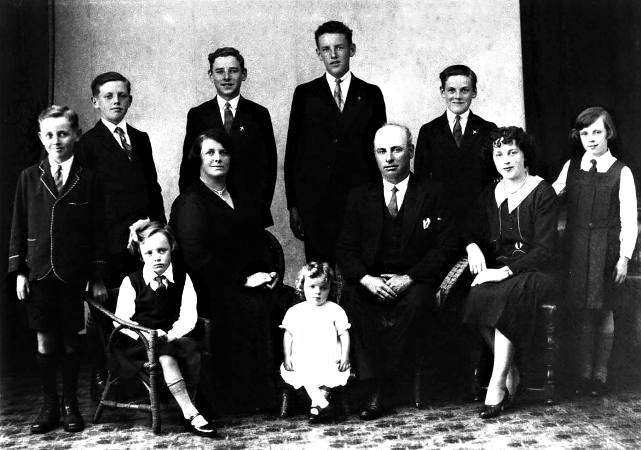
John and Florence Fitzgerald with their family. Left to right: Laurence, John (Jack) Jnr., Veronica, Florence, Leo, Carmel, Patrick, John Snr., Francis, Kathleen, and Margaret, c1933. Courtesy Frank Fitzgerald Jnr.
John Fitzgerald with his wife Florence lived on the corner of Warrigal and Old Dandenong roads. It was there that swaggies would call as they were heading towards the city from Dandenong or Gippsland. This was a time of the Great Depression when many men were out of permanent employment and spent time walking around the State seeking casual work. Florence would give them sandwiches, clothing and shoes. Frank said his mother would always cook for twelve people and if twelve people turned up for a meal it would be split twelve ways but if fourteen people arrived the food would be divided to feed that number. ‘She always cooked extra because she said So and So might call.’ The story is told that when swaggies called, Florence would go to the boys’ room and grab something and give it to them. On one occasion Frank was out shopping with one of his brothers who said, ‘that guy has a coat just like yours.’ Little did he realise it was his coat! There was also the occasion when some worn out shoes were discovered under a hedge not far from the Fitzgeralds’ home. ‘A swaggie had thrown them away when he had put on my father’s shoes,’ said Frank. [16]
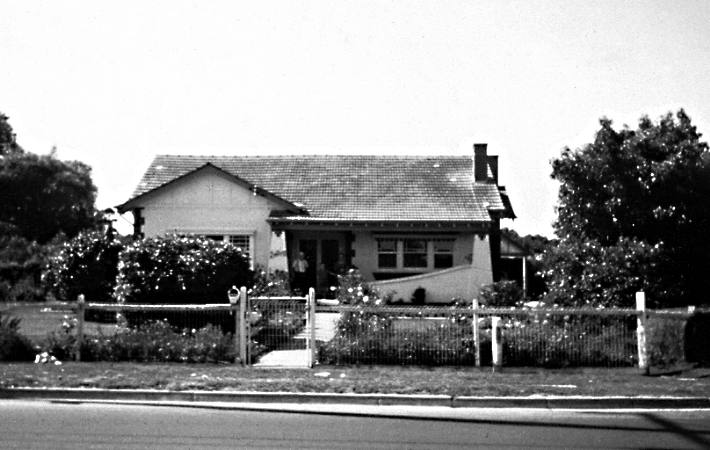
The home of John and Florence Fitzgerald on the corner of Warrigal Road and Old Dandenong Road, in South Oakleigh, c1950. Courtesy Frank Fitzgerald Jnr.
During the Second World War the four Fitzgerald brothers enlisted in the armed forces. However, in 1945 Frank Fitzgerald was called home to help run the company. He was not totally happy about this but labour was hard to get at the time. He recalled the occasion when a notice was placed on the gate to the property ‘:Men Wanted’ and the wag who commented, ‘They must have run out of horses.’ [17] Several decades after the war concluded it was realized that the original factory located in an area that came to be zoned residential could not be economically modernised. ‘The factory began in a small way,’ said Frank Fitzgerald, ‘and over the years additions were added as the business grew. These building additions and an ageing plant created working difficulties.’ [18] Consequently, it was resolved to move the total operation to the new factory that had been established in Dandenong. [19] The land on Warrigal Road was then put up for sale and was bought by P E & I J Norman Pty Ltd who were trading as Normandale Homes, and this company subdivided it for housing. One hundred and thirty six building blocks were created. The three streets created by the subdivision, Druitt Street, Abercrombie Street and Axford Court, were named after directors of the bank financing the venture. [20]
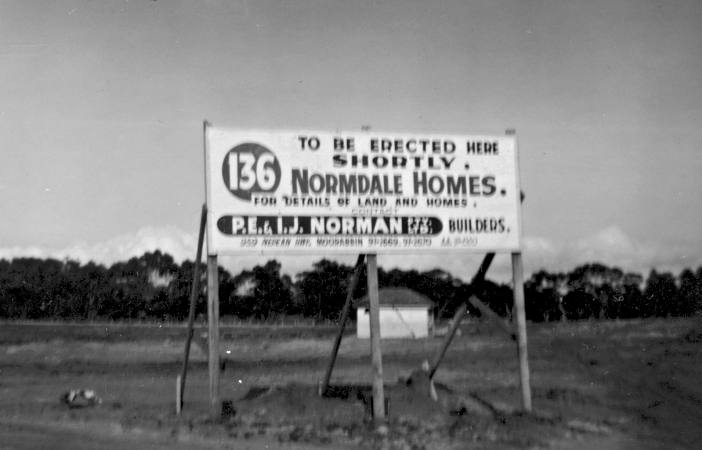
Notice for Land Sale on site of Patrick Fitzgerald & Sons factory, 1963. Courtesy Frank Fizgerald Jnr.
P Fitzgerald and Sons continued to operate from their factory in Dandenong until 1976 when the property was sold as once again urban development had caught up with them. The company originally formed by Patrick Fitzgerald in 1888 had served market gardeners, farmers and others through the production of tallow, meat meal and fertiliser for over eighty years when management decided it was time to close.
Footnotes
- Assistance of Carmel Hogan & Frank Fitzgerald, great grandson of Patrick, gratefully acknowledged.
- Index to Griffith’s Valuations of Ireland, 1848-1864.
- Fitzgerald, Family History (Manuscript).
- Certificate of Marriage.
- Fitzgerald, Family History. (Manuscript)
- Victorian Registry of Births, Deaths & Marriages – Cause of Death: Myocarditis.
- See Cribbin, J., Henry Dendy: The Squire Who had No Head for Business, Kingston Historical Website.
- See Cribbin, J., A Noxious Industry, Kingston Historical Website.
- Moorabbin News, 11 June1927.
- Whitehead G. J., Interview with Frank Fitzgerald, Grandson of Patrick, 2007.
- Whitehead, G J. Interview, Frank Fitzgerald, 2007.
- Whitehead, G J., ibid.
- Good Shepherd Order, Presentation Sisters, Josephite Sisters, Our Lady of the Sacred Heart.
- Dobson W. T., The Living Harvest: A history of St Peter’s Parish, East Bentleigh, 1974.
- Fitzgerald Family History, (Manuscript)
- Whitehead, G J., op.cit.
- Whitehead, G J., op. cit.
- Moorabbin News, 5 June 1963.
- Moorabbin News, ibid.
- Whitehead, G J., op.cit.
